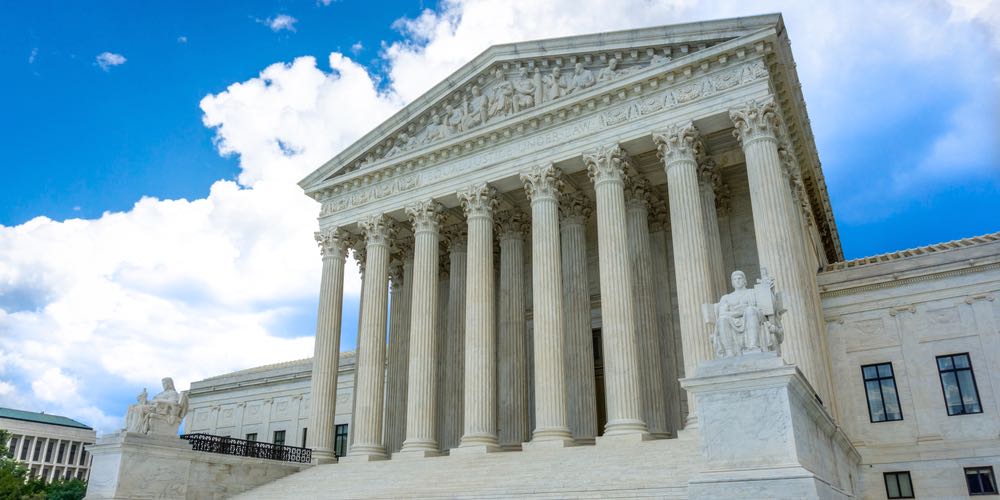Peter J. Wallison's Judicial Fortitude offers a brief and accessible introduction to the struggle to control the administrative state.
A Loper Bright Future for Statutory Interpretation
The Supreme Court’s 1984 opinion in Chevron U.S.A. Inc. v. Natural Resources Defense Council, Inc. was not supposed to be revolutionary. Justice John Paul Stevens, the opinion’s author, initially thought the case to involve an application of “pretty-well settled law” to a “very careful study of the facts.” But over time, as portions of the Chevron opinion were analyzed apart from their initial factual context, the case was transformed into a full-fledged doctrine of substantial and controversial import. Substantial because the doctrine governed how courts reviewed legal decisions made by administrative agencies tasked with regulating so much of modern life. And controversial because the doctrine required courts to defer to agencies’ interpretation of statutes, rather than interpret statutes themselves. The Chevron doctrine thus became a central target of reform for those who believed that independent courts (rather than federal bureaucrats) should interpret federal laws.
After a decades-long effort, Chevron’s reformers finally achieved their goal last week in Loper Bright Enterprises v. Raimondo. To borrow the words of one of the concurring justices, Loper Bright “places a tombstone on Chevron no one can miss.” In reaction, this essay will offer an overview of the Chevron doctrine that was, analyze the Court’s decision in Loper Bright, and highlight some key issues to watch going forward.
The Doctrine That Was
Federal administrative agencies—such as the Environmental Protection Agency or the Occupational Safety and Health Administration—make all sorts of important decisions. Those decisions can often be categorized as falling within one of three buckets: findings of fact, decisions of policy, and conclusions of law. Although distinguishing between the three buckets is notoriously difficult, the Chevron doctrine governed how courts review the third category of agency decisions (i.e., legal conclusions). More specifically, Chevron governed how courts review agency interpretations of federal statutes (a related doctrine, modified by the Supreme Court in Kisor v. Wilikie, continues to govern how courts review agency interpretations of regulations).
To simplify matters quite significantly, Chevron required courts to review agency interpretations of federal statutes by conducting a two-step process. First, courts asked whether a statutory term interpreted by the agency was ambiguous. If it was, then a court was to consider whether the agency’s interpretation of the ambiguous term was reasonable. So long as an agency offered a reasonable interpretation of an ambiguous statutory term, then, when Chevron applied, a court had to rule in favor of the agency—even if the court thought that the agency’s interpretation of the statute was not the best interpretation of the statute. Indeed, that startling result is part of what made Chevron a so-called “deference” doctrine; it required courts to defer to agency interpretations of a federal statute, even when the court would have interpreted the statute differently.
The Chevron doctrine thus placed courts—who are supposed to offer a neutral venue for deciding legal disputes between opposing litigants—in a rather awkward spot. In particular, Chevron required courts to systematically favor the statutory interpretations of one type of litigant (i.e., agencies) over other types of litigants (e.g., entities governed by agencies), even when the court thought that the non-agency litigant had the better of an argument.
The Significance of Loper Bright
In Loper Bright, the Supreme Court brought Chevron’s systematic favoring of the government to an end. At issue in Loper Bright was a statute permitting a federal agency to require fishermen to pay for the privilege of carrying government-mandated observers on their fishing vessels. Although the statute explicitly empowered the agency to require such payments in three unrelated instances, a lower court had invoked Chevron to defer to the agency’s interpretation of the statute—an interpretation which, perhaps unsurprisingly, maintained that the agency had the authority to require fishermen to pay for observers in a fourth, unenumerated instance. On appeal (and in combination with a sister case containing similar facts), the Supreme Court formally overruled Chevron. In doing so, the Court concluded that courts must interpret statutes by exercising “independent judgment,” rather than deferring to agency interpretations.
As the Court explained, Chevron was inconsistent with Section 706 of the Administrative Procedure Act (APA), which requires courts to “decide all relevant questions of law” arising on review of agency action. Put simply: when a court is required to defer to an agency’s interpretation of a statute, it is required to run afoul of Section 706’s mandate that the court (and not the agency) decide questions of law.
While statutory interpretation might touch on complicated areas of regulation, the task of interpreting the law is one for which the relevant expertise lies with courts, not subject-matter experts.
Justice Thomas, who joined the six-justice majority opinion, wrote a concurring opinion that concluded that Chevron ran afoul of the Constitution in addition to the APA. Justice Gorsuch, who also joined the majority, wrote another constitutionally inspired concurrence focusing on stare decisis—a legal doctrine regarding the respect courts offer judicial precedent.
Justice Kagan authored a three-justice dissent, which argued that Chevron was consistent with the APA (on the theory that Section 706 did not prohibit courts from deciding questions of law by deferring to an agency). The dissent also defended Chevron on the grounds that statutory ambiguities were better decided by agencies because agencies were more politically accountable, and had more relevant expertise, than generalist judges with life-tenure.
As between the majority and the dissent, the majority had the better of the argument. To start, the rather rigid deference regime required by Chevron was in more serious tension with Section 706 than the dissent was willing to concede. A court required by a deference doctrine to rule against the litigant with the best interpretation is hardly fulfilling its statutory duty to “decide” legal questions. This is particularly so in those instances, recently critiqued by a former Cabinet member, where agency officials entitled to deference might be “indifferent to—even contemptuous of—the right legal answer.”
Second, given the tenure protections that many federal bureaucrats enjoy, it is far from clear that statutory interpretation is conducted by agency officials who are accountable to the public in any meaningful sense. And even if those bureaucrats are ultimately supervised by political actors, too much political influence over the interpretation of the law (as compared to the development of policy) can be detrimental. Toward the end of Chevron’s reign, as “Presidents turn[ed] increasingly to the administrative state to implement priorities they can’t enact through Congress,” Chevron was “experienced by the public … as a series of sharp vacillations in the law, as one administration succeeds another.” Finally, while statutory interpretation might touch on complicated areas of regulation, the task of interpreting the law is one for which the relevant expertise lies with courts, not subject-matter experts. As the majority explained, “legal interpretation … has been … ‘the province and duty of the judicial department’ for at least 221 years.”
Looking Ahead
The primary holding in Loper Bright is clear: Chevron is overruled, and courts must interpret statutes by relying on their own “independent judgment.” But secondary and subsidiary questions remain. I will thus conclude by discussing three areas to monitor after Loper Bright.
All Eyes on Congress. Because the Court overruled Chevron on the grounds that it ran afoul of the APA, rather than the Constitution, the Court left open the opportunity for Congress to reimplement a Chevron regime via statute. Congress might, for example, amend Section 706 to require (or at least permit) something like Chevron deference. Relatedly, the overruling of Chevron might encourage Congress to take a more prominent role in shaping federal regulatory policy now that Congress is on notice that federal courts will play a more substantial role in filling in statutory ambiguities. At least one Senator has already argued in favor of this second approach.
Standard of Review. The Loper Bright majority was clear in stating that courts must exercise “independent judgment,” but the majority was less clear in explaining whether that means courts must interpret a statute without giving any weight to an agency’s position. Of particular note is a soft form of deference, called Skidmore deference, which permits courts to defer to agency conclusions to the extent that the court determines those conclusions to be persuasive. The Loper Bright majority noted that future courts “may” utilize something like Skidmore deference without running afoul of the APA. I predict that it will be left to individual courts to decide whether something like Skidmore deference is appropriate in any given case—at least to the extent that a reviewing court concludes that a lower court’s reliance (or refusal to rely) on something like Skidmore amounted to an abuse of judicial discretion. Relatedly, the prospect of earning Skidmore deference might encourage agencies to pursue regulatory objectives through rulemakings (rather than informal guidance documents), on the theory that courts might find the former to be more persuasive, and thus entitled to judicial respect.
The Major Questions Doctrine. Finally, another doctrinal development to monitor is how the absence of Chevron affects the development of the Major Questions Doctrine (MQD). The MQD requires agencies to identify clear congressional authorization to answer regulatory questions of “major” political and economic significance. The MQD was originally developed as an exception to Chevron—the idea being that courts would not defer to an agency’s interpretation of a statute if it concerned “major” issues. But over time, the MQD took on a life of its own. Now that Chevron is gone, agencies will have an incentive to claim that they are engaging in policymaking (which the APA requires courts to review on a relatively deferential basis) rather than statutory interpretation (which Loper Bright requires courts to review on at least a near-de novo basis). Litigants in opposition to the agency will therefore have the incentive to argue that agency policymaking runs afoul of legal limitations, including those imposed by the MQD.
In closing, Loper Bright represents a clear rejection of the idea that neutral courts must systematically favor the legal views of administrative agencies, rather than the people and entities that those agencies govern. Going forward, the burden will be on courts to perform the hard work of statutory interpretation. And to the extent that such hard work results in legal decisions that prove unpopular, the burden will be on Congress (and thus on all of us) to make necessary changes to the law. Such are the joys and responsibilities of self-government.


